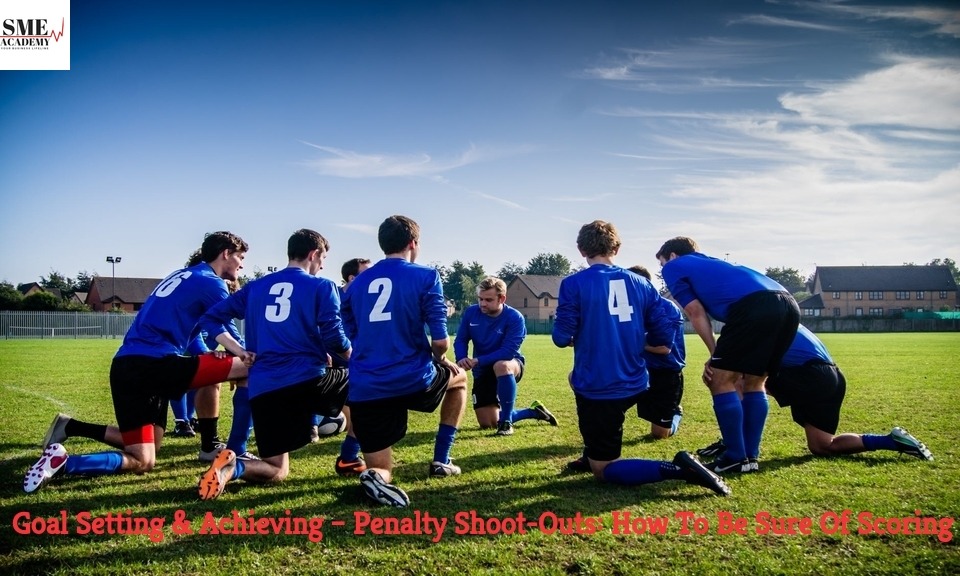
The cup final whistle blows. It’s one each. Extra time is played but nobody scores. The referee signals a penalty shoot-out. Now 5 men from each side have to step up and put the ball into the net just once.
It’s something they can do in their sleep but at least one of them is going to miss. How is it possible that hugely talented and highly-paid stars can miss the vital shot that will bring them glory?
This is a dilemma that men and women have experienced for centuries.
When writing about the pressures of winning an archery contest, the 3rd century BC Taoist writer Chuang-Tzu said that, when we focus on the prize and not the job, we lose the edge to our skill. He said: “An archer shooting for a clay vessel shoots effortlessly, his skill unimpeded. If the prize is changed to an ornament, his hands begin to shake. If it is changed to gold, he squints as if he were going blind. His abilities do not deteriorate, but his belief in them does, as he allows the supposed value of an external reward to cloud his vision.”
Of course, football stars and champion archers aren’t the only ones affected by the prizes of winning.
It’s well-known that the most vulnerable moment in any business negotiation is just before the end, when, perhaps after a long and difficult process, one side sees the prize of an agreement within their reach and relaxes their guard by mentally throwing themselves over the finishing line. As an Indian proverb puts it: “Beware the tiger at the end of the fight.” That’s the moment when, appearing to walk away but sensing his opponent relax, the tiger turns round and makes his strike.
In a negotiation, one of the cleverest ploys that an experienced negotiator can use is the Salami trick. This is when an important concession is refused during the negotiation, but conceded at the end, bit by bit, because the less experienced negotiator relaxes his or her guard. It’s like a salami sausage being given away one slice at a time, until before you know where you are, the whole sausage is gone.
The reason why we fail at the last moment in all these tests is because we become distracted. In short, we lose focus.
When we focus on the task at hand, all our attention is directed on it. We let go of haunting memories from the past and tempting thoughts about the future. We open ourselves to what is happening here and now.
The word “focus” comes directly from the Latin word “focus” meaning a hearth or fire. In pre-electricity days, the fire was in the center of the home. Those lucky enough to have an open fire in their homes today know that moment when on a winter’s evening you can just stare into a roaring log fire or onto the glowing embers and lose yourself in your dreams.
In actual fact, there are two kinds of focus: hard and soft.
Hard focus is the same as concentration or tunnel vision when all you are aware of is what’s in front of you, like a 100-metre athlete looking down his track to the exclusion of everything else.
There are two ways to get into a state of hard focus. One is to be physically still. The other is to remove all the distractions. Once you blot out everything around you, hard focus is what’s left.
Soft focus has a different quality. It’s also known as single-minded immersion, zero-point arousal, and free-flow thinking.
Instead of focusing your thoughts onto your objective in a laser-like way, you expand your awareness in a dream-like way to include your whole environment. You tune in to time and place. You even become aware of yourself in a disassociated way.
A good soft focus exercise is to imagine yourself as a blue feather floating on the wind. There is no destination, no time, no obstacles. You are aware of yourself and enlarge into the sense of freedom and possibilities.
It’s that moment when time stands still and has no more meaning, when hours pass like minutes and minutes like hours.
It’s what Daniel Coleman calls “flow”: a state of forgetfulness, the opposite of rumination and worry. Instead of being lost in nervous pre-occupation, people in flow are so absorbed in the task at hand that they lose all self-consciousness, dropping the small pre-occupations – health, bills, even doing well – of daily life.
And that’s the secret of focus: doing the job for the sake of it, not for what it leads to.
In their book “Thank God It’s Monday”, Charles Cameron and Suzanne Ellusor describe seeing a Zen monk sweeping snow from the steps of a temple in the middle of a snowstorm. The more it snowed, the more he swept. The monk did not expect to clear the steps of snow or beat the storm. He didn’t expect anything. The simplicity of his actions was enough to make it worth doing, process rather than end result, being rather than completion.
This is what they call “zenning” and it’s at the heart of all success.
There are really only two ways you can fail in any venture. One is to give up. The other is to try too hard. If you’re at the last hurdle, the final straight, or about to take the final shot in a tied game, you simply have to learn to slow down, let go and trust in yourself. That’s when you’ll discover all the energies opening up to you and success will surely be yours.


0 responses on "Goal Setting & Achieving – Penalty Shoot-Outs: How To Be Sure Of Scoring"